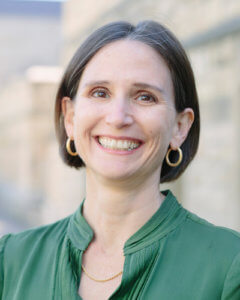PRESIDENT’S DESK Wildfires and COVID-19
By Toddi Steelman, PhD, IAWF President

The impacts of COVID-19 have been all pervasive across the globe. Every aspect of our lives has been affected, including wildfire. While COVID-19 is affecting the northern hemisphere right now, in only a month or two the southern hemisphere will also be affected.
There are multiple dimensions to how COVID-19 is impacting wildfire.
First, the health crisis has precipitated a financial crisis that will have immediate and long-lasting impacts on how we prepare for, manage and recover from wildfire. Budgets from the local to the national will be affected and this will have consequences for operating plans for not just this year, but next year and beyond.
Second, before the wildfire season started, preparedness work was disrupted. Many places lost a majority of their prescribed fire season and their ability to do mitigation work. Because large gatherings were discouraged, pre-wildfire planning and preparedness meetings did not take or had to take place in remote settings where it is harder to make connections that are leveraged during the heat of the fire. Pre-season fire training also suffered.
Third, during fire season there have been questions about how mutual aid agreements will be executed. Some jurisdictions are being prohibited from responding beyond their borders. We have seen and will likely continue to see more air resources for initial attack because they are safer under COVID-19 conditions, but they are also more costly—see the first point about budget pressure. More resources are being put on smaller fires to keep them from becoming bigger. Modularization is being practiced in fire camps this summer—basically 20-member “families” are sticking together and not interacting under usual camp practices. Camps are smaller or more remote and congregating around food and standing in the chow line is a thing of the past—there are lots of bags with food that are delivered. Briefings are occurring over the radio.
Fourth, we know there are cumulative and interactive effects from wildfire smoke and COVID-19 and this will have consequences for wildland fire fighters and the public alike. Wildfire smoke has high concentrations of particulate matter (PM2.5) as well as other air pollutants. Research has demonstrated that there are relationships between exposure to PM2.5 and asthma, among other respiratory issues. According to Sarah Henderson, from the University of British Columbia Center for Disease Control, smoke exposure may make the pandemic worse because when your immune system is overwhelmed dealing with smoke particles it has less capacity to deal with the virus— thereby making people more susceptible to COVID-19. Evidence from Erin Landguth and Curtis Noonan out of the University of Montana found that smoky summers lead to more severe flu seasons the following winter.
Those most vulnerable to smoke impacts must pay extra attention. This includes children, older people, pregnant women, those with underlying cardiopulmonary issues, and firefighters who carry a high smoke load already. Dr. Henderson suggests to avoid smoke, people should shelter at home, close doors and windows, use portable air cleaners, including installing an air filter with MERV rating of 13 or higher, use the recirculate option instead of fresh air option in your house and car. Importantly, cloth masks do not protect against PM2.5, but N95 respirator masks will—of course, these are in short supply because of the demand from health care workers.
These consequences from the current pandemic are not going away any time soon. In the absence of a vaccine, colleagues in the southern hemisphere are also seeing these patterns emerge and expect them to continue through the fire season and into the new year. Regardless of the hemisphere in which we work, the key preparedness and prescribed fire activities will also be impacted. While timelines vary about when a vaccine might be ready, in all likelihood, fire season in the northern hemisphere in 2021 could be facing similar challenges.
The only thing certain is the pervasive uncertainties through which we are all managing at this time.
